Ana Teresa Barboza – Handcraft and nature
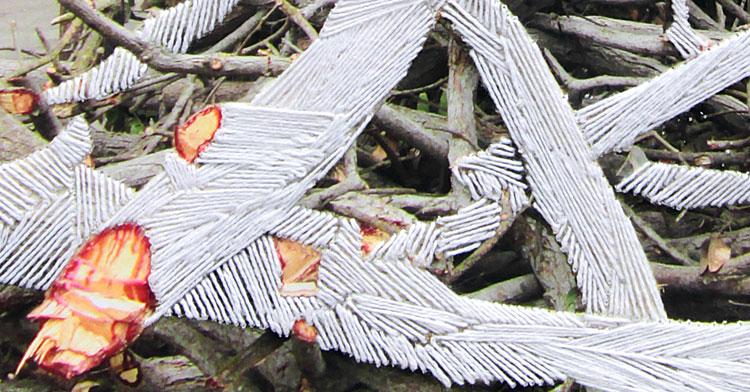
Born in Lima, Perú in 1980, Ana Teresa Barboza lives and works in her native city. She studied painting in the Faculty of Art at Pontifical Catholic University of Peru (PCUP). Using embroidery, yarn, and wool, she creates landscapes and other imagery that exists in the space between tapestry and sculpture. Emulating the flow of waves or grass, each piece breaks out of its embroidery hoop and tumbles down the wall upon which it is being displayed.
In our interview with Ana Teresa, she tells us about the rewards of manual work and how her notebook acts as a launchpad for her art.
Familiarity to the image
TextileArtist.org: What initially captured your imagination about textile art?
Ana Teresa Barboza: Working with my hands, it’s something I’ve always done since childhood… and the incredible images that textiles can produce. I feel the fabric gives familiarity to the image, it pulls you in to stop and admire the details.
What or who were your early influences and how has your life/upbringing influenced your work?
Seeing my grandmother as a child making all these handmade pieces. When I was at her home she was always embroidering or weaving or sewing on the sewing machine.
What was your route to becoming an artist? (Formal training or another pathway?)
I studied painting for six years at the art faculty in the Catholic University of Peru PUCP. It is a school with modernist principles, focusing more on the formal aspect of the work; line, color, composition.
Whilst there I discovered that not all art was like that, and that the school lessons had many empty fields that you must fill yourself, with the things you’re interested in. I found artists like Annette Messager, Ghada Amer, Tracy Emin, Louise Bourgeois, and many other artists who use different techniques and different ways of thinking to make art. After college I started designing clothes to earn some money and at the same time continued to make art. With clothes I could learn about fabrics and its construction, which also influences my work.
A fusion of different techniques
What is your chosen medium and what are your techniques?
I use fabrics and yarns, all kinds of yarn, vegetable fibers, animal and synthetic. I work with embroidery using different techniques depending on the subject I am working. I also like the fusion of different techniques such as mixing tissue (crochet, sticks) with embroidery or drawing with embroidery or photography.
How would you describe your work and where do you think it fits within the sphere of contemporary art?
I think my work is in between textile art and feminine art. I work with threads, wool and fabrics, producing images with embroidery and knitting, mixing them with drawings.
I like the manual work, using my hands to transform different materials. My work has passed through different periods: The body and skin: embroidering as if they where tissue, suturing and decorating it. Clothes: using the dress as a language to discuss relationships we establish with other people. I continued with the topic of relationships but more instinctively, using representations of animals beside humans, creating tensions between them.
I started using drawings when I began embroidering animals to differentiate people from animals in order to create a greater tension between the characters. The drawings came from photographs I had in my personal archive. My work with embroidery started in university when I graduated in 2004. What interests me is that embroidery gave another layer of information to the image, and a new relationship between them and the technique I use.
Now I’m interested in embroidery and knitting in order to make a parallel between the process of handcraft and the process of nature. Creating structures with threads similarl to the tissues of a plant for example. The knitting in the work forces us to change our view of nature, and explore its structures and processes.
Do you use a sketchbook?
I use a small notebook I always carry with me and I write down things anytime. I make sketches and small drawings which help me with photography and work on the computer afterwards.
Tell us a bit about your process and what environment you like to work in?
My work starts from the notes I write in my notebook and from the things I read or see everyday in my life. I am ready to work when I have a clear idea of what I want to do and how I can achieve it. I do little proofs because embroidery work takes a long time to develop. I just need a space with light and a large table.
The process of manual labor
Tell us about a piece of work you have fond memories of and why?
I did a piece in 2013 for a solo exhibition. It went through many forms in my mind and depended on photography I wanted to take on the road. Every season in Lima, the city council cut the trees and plants in public gardens and pile up the remains. I went out for several months to try and photograph this but I couldn’t find them anywhere. And when I finally found them I didn’t have my camera with me. A week before my exhibition I woke up to the sound of a chainsaw cutting the branches of a tree that was in front of my house, and I said, this is the time and got up quickly to take those pictures.
How has your work developed since you began and how do you see it evolving in the future?
My work has addressed various styles… from photography to fabric transfers and embroidery on the image, fabrics and embroidery, drawing and embroidery, weaving and embroidery. The manual embroidery work went from being a technique to talk about something, to being the focus of my work. Talking about the process of manual labor in order to revaluate it. In the future I would like to be able to work more in 3D.
Tools and exhibitions
What piece of equipment or tool could you not live without?
Definitely the needle and thread.
How do you go about choosing where to show your work?
In Peru there are very few art exhibition spaces. I currently work with a gallery that represents me here in Lima and one representing me in Miami. I show exhibitions in these galleries and other spaces.
Where can readers see your work this year?
I have a two-person exhibition in August in Lima at Wu Gallery with artist Natalia Revilla. And I’ll have a residence in Geneva for two months until June to produce a piece for an exhibition organized by a space called Utopiana residence.
For more information please visit: www.anateresabarboza.blogspot.com

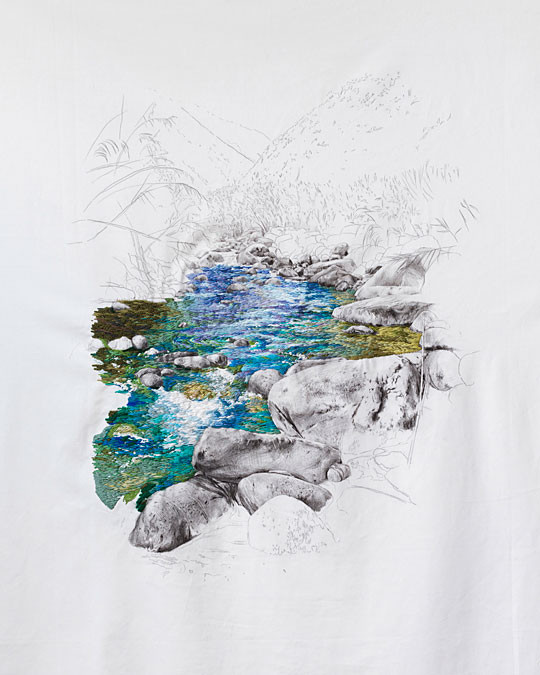
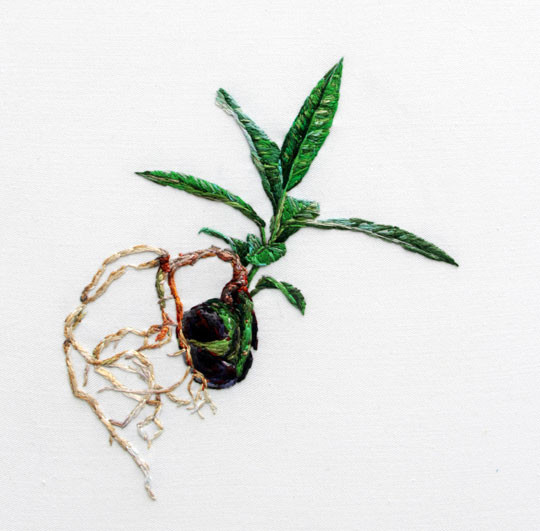
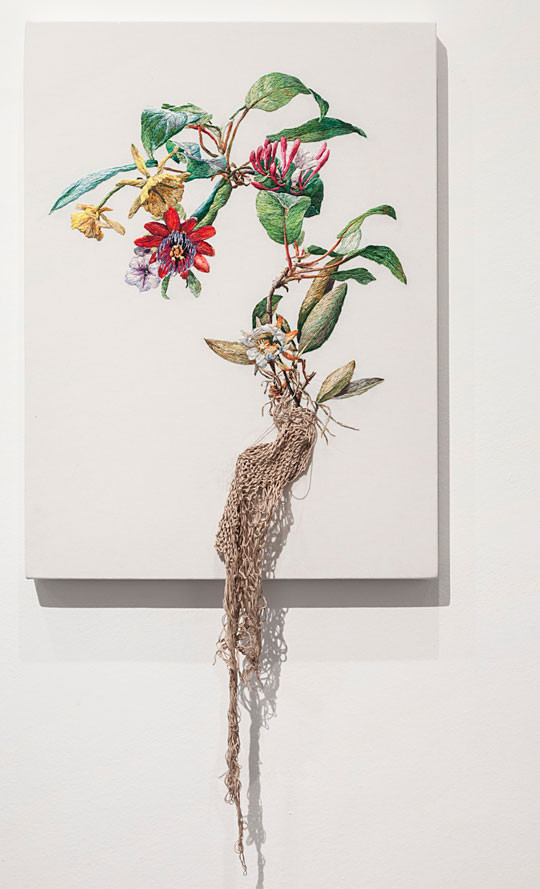
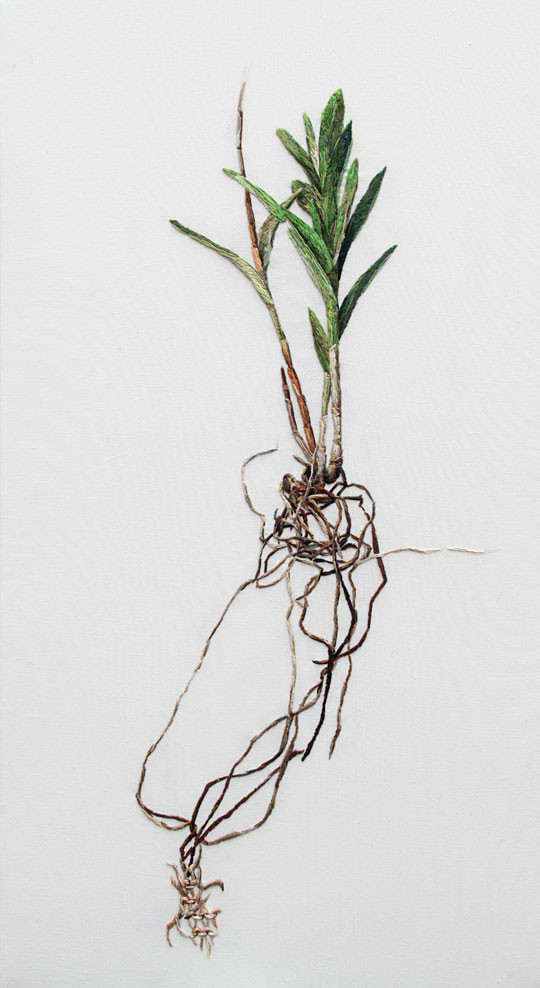
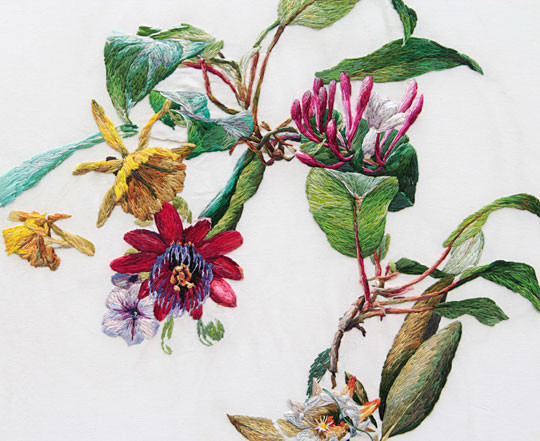
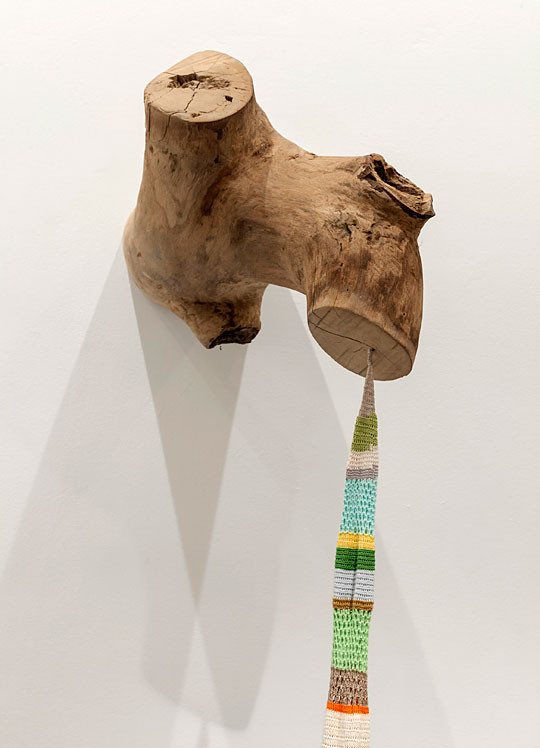
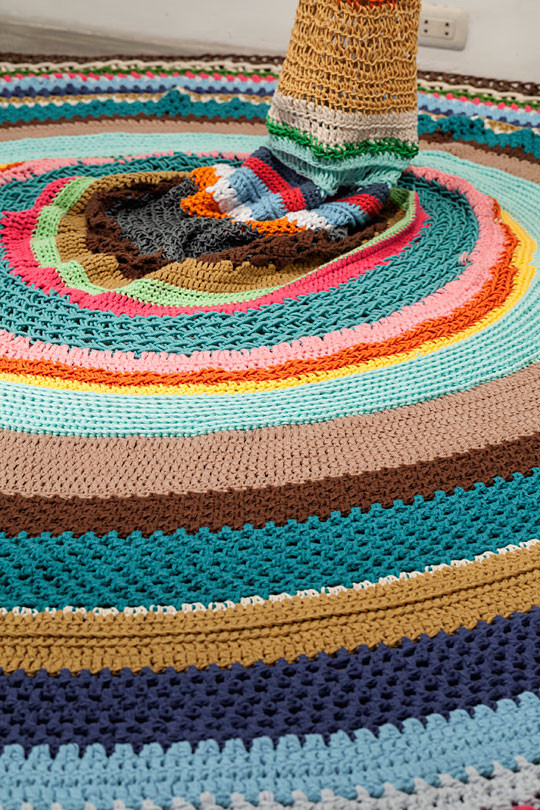
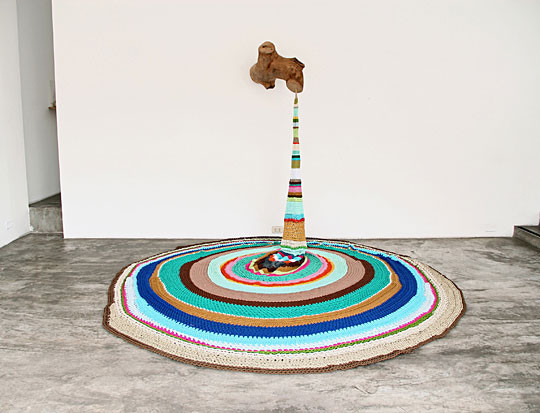
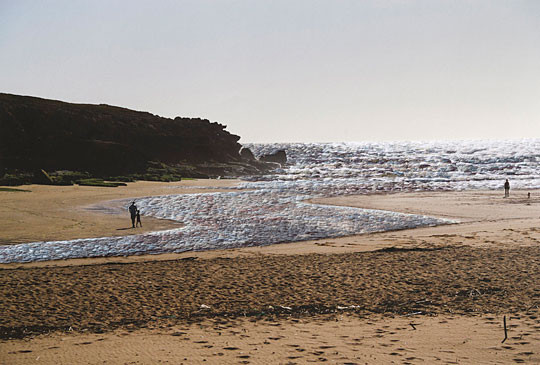
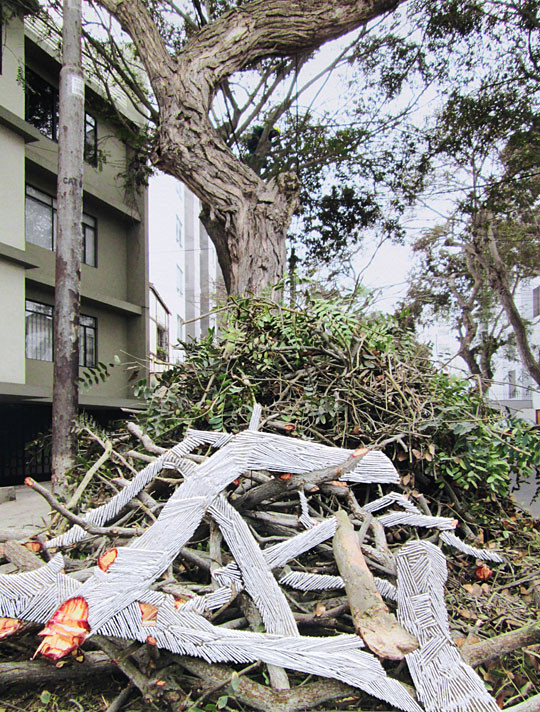
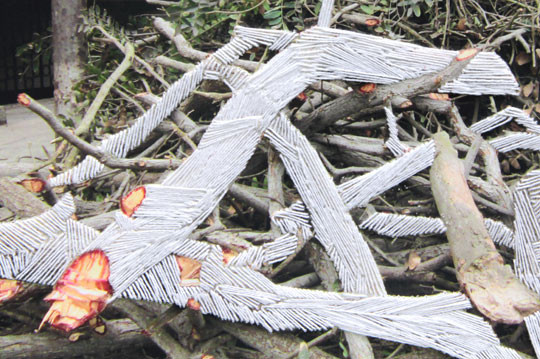
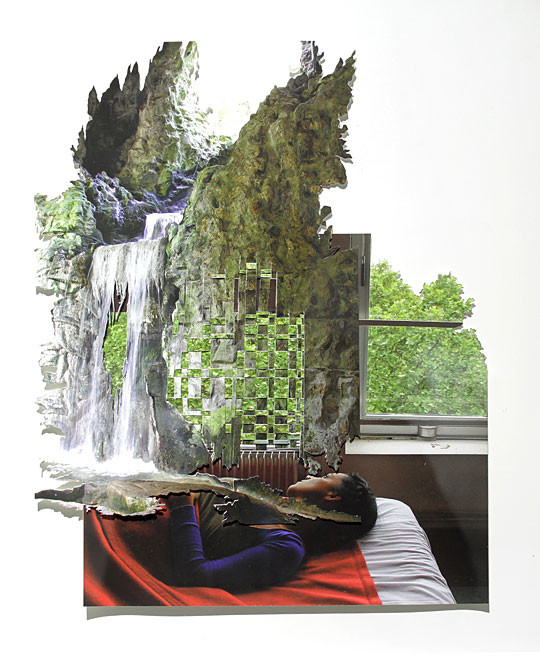
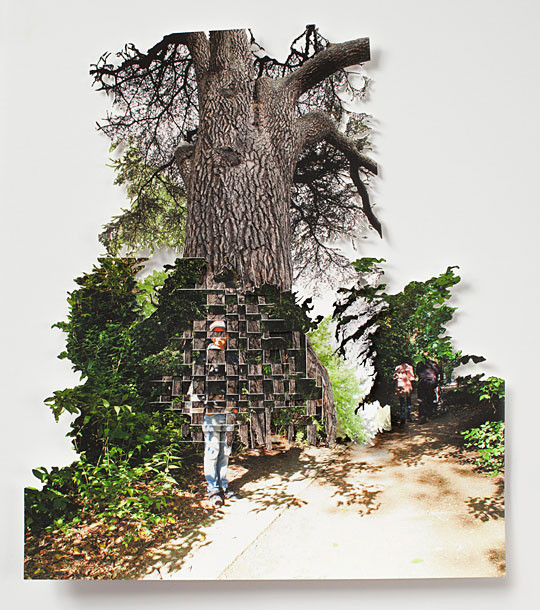















Wonderful! I especially love the embroidered flowers. They have so much movement in them…
Love the detail in these pieces! Beautiful work.
love the work of Ana Teresa, I knew some of her previous works and it’s amazing too!!
This work is so inspirational.
Hello , My name is Tasha,
I am currently studying studio art in year 11 and for my last assignment for the year we are required to create an artwork of our choice. As part of my research I have explored your work and would like to include your work as part of my influences. If you could please answer a few questions for me that would be great! Thankyou
1. When and Where were you born?
2. What was your journey to becoming an artist? (any cultural or historical influences)
3. Where do you find sources of inspiration and who or what inspires you in creating your artworks?
4. What are your chosen mediums and techniques for your pieces?
5. What is your education history?
6. What is your workspace like?
Thankyou for your time
just lOVe your art, your amazing great inspiration to me, thank you
Your artwork is very unusual, and so delightful. I like the concept of working with nature. That inspires me to, and I think more and more of this when I am down the river daily. Thank you, I will enjoy following your lovely inspirations.
Master…. Museum quality art bravissima